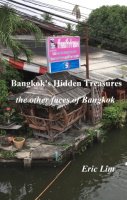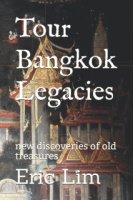- Home
- Bangkok Museums
- Bangkok Dolls Museum
The Bangkok Dolls Museum
Thai culture in miniature
By Eric Lim
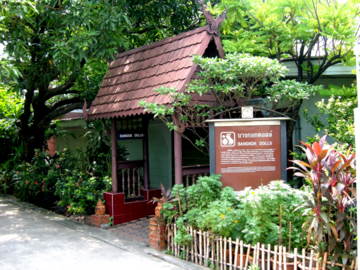
The entrance to the dolls museum
The Bangkok Dolls Museum is one big doll house full of antique collector dolls made by a master doll maker who has refined the art of doll making for the preservation of the culture and tradition.
The museum is the brainchild of Khunying Thongkorn Chanthawimol, who trained as a doll maker in the Ozawa Doll School, Tokyo Japan.
Set up in 1956, the museum has a doll collection of more than 400 Thai hand-made dolls from local material.
The quality of the dolls in the Bangkok Dolls Museum is well known to doll collectors and connoisseurs the world over. Accolades for Khunying Thongkorn and her Bangkok dolls include
- The first prize, Golden Peacock Feather, at the Third International Folklore Dolls Biennial 1978 in Krakow, Poland
- First prize in the Toy section, Thai handicraft competition, organized by the Ministry of Industry for the Bangkok Bicentennial 1982
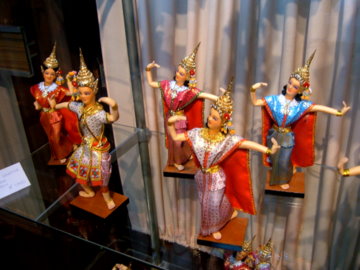
Traditional Thai dancers
There are two sections in the dolls museum; the outer room consists of antique and collector dolls which are not for sale, dolls displayed in the inner room are for sale.
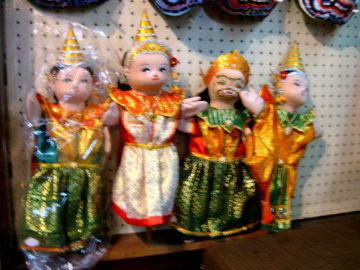
Doll displays cover aspects of rural life in Thailand, the Khon dance drama, Thai hill tribes of northern Thailand, Thai traditional costumes from the Ayuthaya, Sukhothai and Bangkok eras.
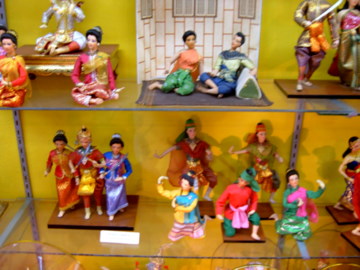
Traditional Thai costumes
There’s also a section on collector dolls in traditional costumes from almost every country in the world: Austria, Belgium, China, Egypt, France, Greece, Hungary, India, Japan, Laos, Netherlands, Oman, Poland, Russia, South Korea, Turkey and the USA to name a few.
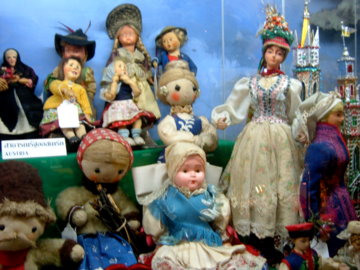
The international dolls section
Dolls are made with painstaking attention to details in costume designs and doll houses.
The Bangkok Dolls Museum doesn’t just display individual dolls but dolls in scenes depicting life in rural Thailand, farmers at home, at work in the fields or children at play.
The morning scene of life in a riverside village with monks passing in boats to collect alms as food vendors sell their wares in boats is one example.
Others are of farmers working in the fields and rural folk from the various provinces participating in traditional folk dances during festivities.
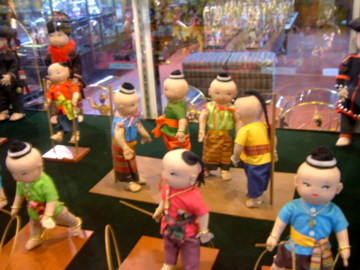
Kids at play
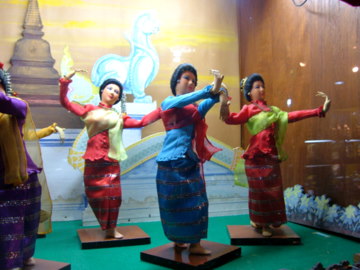
Folk dancing
An attractive display is that of the various hill tribes in their colourful traditional costumes going about lives in their villages.
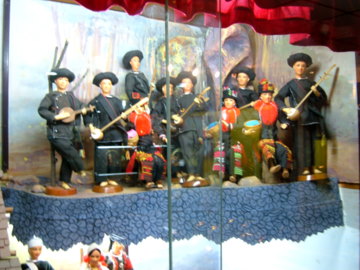
Hill tribes of northern Thailand
The scene that was really touching was the Nativity scene in a traditional Thai setting!
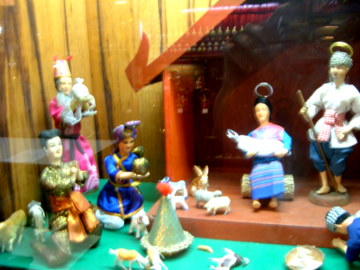
The Nativity in Thailand
The centerpiece of the Bangkok Dolls Museum is the comprehensive doll collection of the various characters in the Khon dance drama based on the Ramakien.
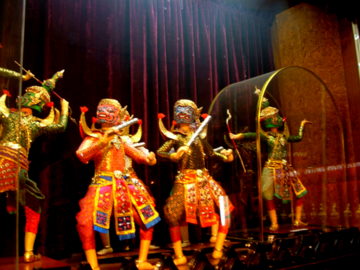
The array of Khon dolls in the Ramakien, with the forces of good and the forces of evil deployed in battle, is an impressive display taking up an entire wall.
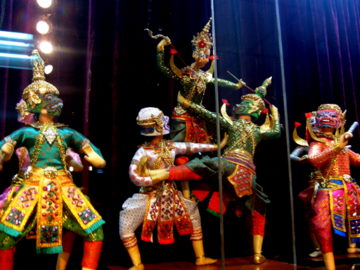
The miniature Khon masks are another fascinating example of the skills of the doll makers. If making the elaborate life-sized version is difficult enough, just imagine making the miniature.
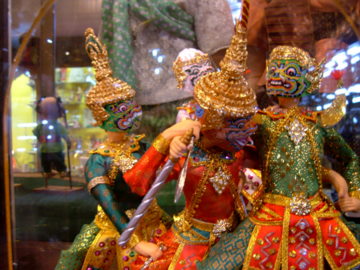
The Bangkok Dolls Museum encapsulates invaluable aspects of Thai traditional life and culture as a legacy for generations to come.
Update
I returned to the Dolls Museum on 27 May 2009, to take these pictures. It was more than four years since my first visit. The place hasn’t changed one bit. It was just like when I first saw it more than four years ago.
I was told by a staff member that Khunying Thongkorn is now in her 90s and spends her time at home. The doll project that she has started goes on.
Map to the Bangkok Dolls Museum
View Larger Map
How to get there
On foot or by car
From the Pratunam junction proceed northwards along Ratchaprarob Road, past the level crossing at the Makkasan junction.
At the next junction with Sri Ayutthaya Road turn right. Proceed on till you reach a fork junction.
Take the left fork to a small lane called Soi Rachata Phan. The soi is locally known as Soi Mor Leng.
Proceed along this soi under the flyovers following the route marked on the map till you reach the museum, which is a single-story building within a walled compound with several other houses.
If you're driving, take the right fork, as it's a one-way street.
By Bangkok MRT/taxi
Take the Green Line (Sukhumvit Line) to N2 Phaya Thai. From the station, take a taxi there.
The address of the museum is:
Bangkok Dolls
85, Soi Ratchata Phan,
Makkasan
Bangkok 10400, Thailand
Tel no. 02 – 245 - 3008
The museum is open everyday from 08:00 am – 05:00 pm, except on Sundays. Admission is free.
For other Bangkok Museums.
My Journey through Thailand Part I The First Steps
This is my second e-book and the first in the series of travel journals on my trips to explore the various provinces in Thailand. This edition, which covers my travels from late 2009 to mid-2013, will guide you to historical sites, cultural monuments and exquisite Thai handicraft, across a vast spectrum of cultural and ethnic diversity.
You can have a virtual tour with this e-guide book or take the first steps yourself in this journey through Thailand.
My Kindle edition

Search Tour Bangkok Legacies with DuckDuckGo
My Journey through Thailand
Part I The First Steps
My Kindle edition

My Smashwords edition



